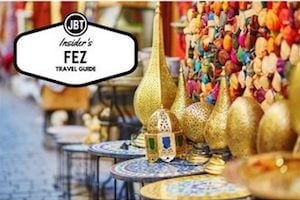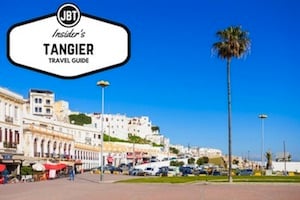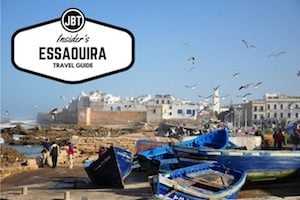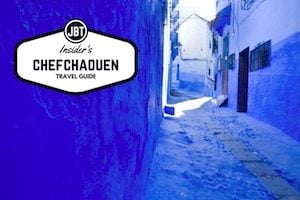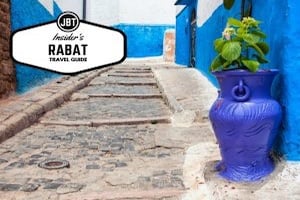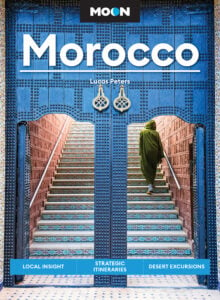I was traveling through the dusty south of Morocco, touring the Sahara with my guide, Hamid. He was trying to show me exactly where a particular scene in Ridley Scott’s epic film, Gladiator was shot. If you’ve seen Gladiator, you’ll remember Proximo (played by Oliver Reed, looking sufficiently Arab-ish) who purchases General Maximus (Russell Crowe). In one very memorable scene, Proximo says to the slaves, including the disgraced General Maximus: “I did not pay good money for you for your company. I paid it so that I could profit from your death.”
“It’s right there,” Hamid says excitedly. He loves Gladiator. At other points in our journey he gives me a quick grin and exclaims with his best Russell Crowe impersonation: Are you not entertained!
Needless to say, I’ve been more-than entertained throughout my time in Morocco. And I’m not the only one.
With nearby Ouarzazate, the de facto Hollywood of Morocco, filming in and around Ait Ben Haddou (often “Ait Benhaddou”) — the best preserved ksar in all of Morocco — has been made easy! For Ridley Scott, this meant he only needed a few rough poles to act as stockades, and a couple of walls plastered with adobe, and his magnifiscent gladiatorial village was done!
The majestic Aid Ben Haddou, and the entire desert scape of the vast Sahara around it, has not only inspired Ridley Scott, but countless other directors and filmmakers. In fact, Ridley Scott was so obviously inspired by Ait Ben Haddou that he came back to shoot the Holy Land scenes for his movie Kingdom of Heaven here These are just a couple in a long catalogue of films that have used this ancient citadel as a set. Some of the most notable films include the epics Lawrence of Arabia and The Last Temptation of Christ as well as Kundun, The Jewel of the Nile, The Mummy, and the TV series Game of Thrones.

Ait Ben Haddou: More Than Just a Pretty Film Set
Ait Ben Haddou is more than just a pretty backdrop for Hollywood celluloid. This ksar — a fortified village whose history goes back almost a thousand years — is rightfully a UNESCO World Heritage Site, one of a handful to be found in Morocco.
Like most ksars throughout the Sahara, the mudbricks of Ait Ben Haddou have gradually eroded and the erection of new walls has been made necessary. Still, the maze of narrow streets and crenulated towers you see these days are amazingly almost all from the seventeenth century.
As a strategic stop for caravans of camels, often numbering hundreds, on the trans-Saharan trade route from the Sudan to Marrakesh carrying gold, silver and slaves and returning with salt, Ait Ben Haddou was once a strategic, thriving town, home to thousands. As well a private homes — everything from small palaces to modest one-room dwellings — there were communal areas including a public square, a mosque, a caravanserai to house those traveling with the caravans, grain threshing areas outside the ramparts, a fortified granary (agadir) at the top of the village, the last redoubt in time of invasion, and two cemeteries, one Muslim and one Jewish.
When the French built a new road over the Tizi n’Tishka Pass —a stunning piece of engineering that zigzags its way up to 2260 meters from Marrakesh before descending to the pre-Sahara flatlands — the Marrakesh to Ouarzazate caravan route ceased to be. The population of Ait Ben Haddou quickly dwindled.
Today only a handful of families live in the walled village. While some of the larger and more important buildings have been maintained, many of the traditional mud and straw dwellings are returning to the red earth from which they were built.
From across the dry river bed of the Oued Ounila, Ait Ben Haddou rises, as if conjured by some sorcery from the distant past. Around its red-earth walls, olive groves and date palms form a patchwork of vivid green fields all around. You can make out the kasbahs, the homes of the wealthy, built around a central courtyard and guarded over by a tower at each corner. A family of storks are perched on one of the lower towers, a sign of good luck. The village layers its way up the hillside, stopping just short of the wall that safeguards the granary, perched on the very top. But it’s only as you get closer that you see that so many of the roofs have collapsed, walls are crumbling, and arches fallen in.

Life in the Ksar of Ait Ben Haddou
Simply talking of Ait Ben Haddou’s buildings or role as a movie backdrop overlooks the fact that it is still home to a number of resilient families. As I climb the streets to the granary a young man suddenly pops his head out of a door to offer me small paintings of the town. I thank him and move on.
Shortly after, I see an old lady working a loom in what looks like a dark alleyway but is probably part of her home. I ask if I can watch her work. Helped probably by the fact that I had slipped her a twenty dirham note, she allows me to sit beside her as her nimble fingers work the pattern in a brightly colored rug. The making of these handwoven Moroccan rugs is incredible. No design is ever written down. While the basic layout of the pattern may come from the traditional designs of her tribe, the rug is the story of the weaver’s life as she experiences at that moment — her joys and sadness, trials and tribulations — which is why every true hand-woven rug is completely unique. And rugs are always woven by women.
I say my goodbyes to the woman and continue climbing the narrow, higgledy-piggledy streets. I am eye-level with the decaying walls that stand in rows, I get a close up view of the basic traditional building materials. Compacted bricks, called pisé, are laid over footings of stone harvested from the harsh terrain outside the town and covered with a thick layer of adobe. But “basic” doesn’t mean “plain.” The tops of the high angle towers and upper sections of the kasbahs are decorated with motifs. Ziggurat designs are created by careful spacing between the clay bricks, rows of blank fenestration, looking as if they are waiting for windows to be fitted, and the ancient design of the horseshoe arch used as door and window openings. The holes in the walls aren’t the aftermath of tribal warfare, they are there to ventilate the walls, which would dry out and disintegrate much quicker without them, and are found throughout Morocco where this construction material is used.
To help maintenance costs, some of the kasbahs allow for visitors (for a modest fee of ten dirhams, about one dollar or one euro). The small dark rooms with uneven floors and tiny windows may seem incongruous when you recall that wealthy families would have lived here. But go back four centuries and think how your ancestors might have lived, using the traditional building methods of the area. In Ait Ben Haddou, as in many regions of Morocco, buildings had been constructed (and still are being) of hand-made bricks, with rooms the maximum size of the nearest indigenous tree that provided the ceiling beams, narrow external slits as windows so archers could lose arrows during an attack (and these were perilous times of regular and vicious tribal wars). And bear in mind the soaring summer temperatures, where external windows guarded by ornate metal grills and open internal-facing window apertures allowed any passing breeze to cool the house, and flat roofs became open-air bedrooms to avoid the claustrophobic heat of a crowded bedroom. And as the traditional Moroccan way of life is to live with extended families, these rooms could get pretty sticky – and probably pretty smelly as well.
The inclination to use cement for speedy and more lasting restoration, and metal door and window frames to replace the original wood has so far been controlled, although a few reinforced cement lintels have slipped through the net, which, fortunately have been covered by adobe rendering. But one of the beauties of Ait Ben Haddou, whether in its restoration or return to its prime constituents, is that everything is in harmony with both its natural surroundings and the culture of its inhabitants.
The climb to the agadir is strenuous in the heat but immensely worth it, with glorious views of the palm groves at the foot of the village and the hamada, a stony desert that stretches to the infinite horizon. The afternoon is slowly settling and the warm light of the desert sun casts a glowing sheen over the russet pink of the village below. As shadows stretch in the narrow alleyways I make my way down the hill and out of a small arched side entrance. For a few minutes I watch a man weeding a patch of garden. History or no, life still goes on.
Exploring Ait Ben Haddou with Journey Beyond Travel
Over the years, Ait Ben Haddou has enchanted everyone from world leaders to film producers. The Journey Beyond Travel team can help you experience this ancient fortress as a part of your visit to Morocco. Several of our well-planned itineraries include a stop here (among more off-the-beaten path locales).
If you want to make a stop at Ait ben Haddou a part of your dream visit, feel free to contact our on-the-ground team so that we can arrange a trip to Morocco.


